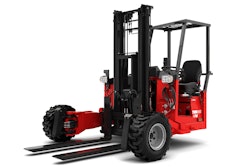
Beginning in 2020, supply chains endured a time of disruption and excessive freight costs. Now, aggressive savings targets are coming from corner offices, and with demand falling and carriers having excess capacity, businesses suddenly have negotiating power. Transportation, however, is only part of the puzzle. What’s happening throughout the supply chain, including inside the distribution center’s four walls, significantly impacts whether businesses can achieve targets for cost savings and profitability. But with warehouse metrics so inwardly focused on operational performance indicators like throughput measures, how can businesses leverage warehouse data for the cost savings and business outcomes they need to achieve? Using the right kind of data can certainly help improve warehouse processes – businesses can isolate variables to determine which specific factors are negatively affecting productivity. On a larger scale, operations can use warehouse data to drive holistic change, using it to help reimagine the entire distribution network for optimal profitability.
Harnessing the data you have
The primary ingredients needed to harness data effectively are the ability to generate, access and validate it, and the expertise to extract meaning. Many businesses put some warehouse data to work while only scratching the surface of its true value. It may not be that these companies have “bad data” or even not enough data. They may just not be examining it thoroughly enough, or may lack the familiarity with warehouse data analysis to anticipate where valuable insights might be tucked away. As a representative example, I can point to a retailer that sold furniture among other furnishings. A closer, more informed examination of the operation and data provided visible insights into a large discrepancy between the amount of space and labor dedicated to the furniture and its relatively poor sales. Teasing out these types of insights, simple though they might seem, can play a major role in purchasing decisions, space utilization and ultimately profitability.
Basic, intermediate and advanced usage
In practice, the level of sophistication with which data is used varies greatly, so it's worth understanding what that progression looks like and how businesses might be able to do more to put their data to work. At the most basic level, operations are homing in on the productivity of the distribution center at a high level that allows them to make inferences or characterize their performance in terms of units per hour or dollars per unit. They might be able to get as granular as functional areas – such as receiving, put away, picking and pack and ship. They accumulate and understand the volume coming into each of those areas, the profiles of their products in terms of size and other characteristics and how frequently they are getting brought in or moved. But typically, at this most foundational level of leveraging data, they can’t drill deeper into specific work areas and smaller components and processes – that’s representative of a more intermediate approach. In an even more advanced scenario, operations are able to pair that very detailed view with a macro perspective. Operations can look to warehouse data experts for help extracting metrics that are typically siloed within the facility and demonstrating the role they play in optimizing the entire distribution network. These advanced analytics can connect an individual facility to its larger role within the network or follow the full lifecycle of a product throughout the supply chain, understanding how it moves at each stage and the costs associated, for a comprehensive picture of the factors that influence profitability.
Making warehouse metrics speak the language of the bottom line
From that point, warehouse data experts can shape processes based on the goals of the organization, profitability being one of the primary aims. Most operations managers are already familiar with traditional metrics like throughput and functional productivity. These discrete tasks hold a wealth of information that businesses can use to boost profits individually. Looking across workflows can help businesses see when a particular warehouse task receives resources and attention that does not contribute to the bottom line. Such insights can lead operations to better focus their attention. Replenishment is a good example. It’s a necessary function for the overall operation, yet high productivity alone may not tell the full story. It is important to understand how the work impacts the full operation. One must ensure incentives are not misaligned with company interests and not encourage workers to replenish more product than necessary, despite its productivity. In short, it’s essential to have a view into the data to inform needed process or performance management changes and ensure that there is in fact alignment between resource investments, incentives included and profit-generating activities.
Technology advances can also help harness real-time data, enabling operations to adjust to constraints, avoid downtime, and become more profitable. For instance, if a picker leaves a workstation unexpectedly in a facility running a goods-to-person (G2P) system, real-time warehouse optimization software could spot that change and adjust the flow of work to the G2P system until the picker returns and capacity is restored. This sort of automated intervention can help avoid inefficiencies from work piling up, and analytics are they key to informing this greater level of self-adjustment on the part of automation.
Even more holistically, making effective use of warehouse data can also enable businesses to pivot their supply chain quickly to respond to changing demands while protecting margins. Once a company has a view of what it costs to move product throughout the entire supply chain, it can use that data to shape larger decisions regarding the composition of the distribution network. For example, holidays often require short-term adjustments due to product demand, labor shortages and overtaxed storage and throughput capacities. Without access to the right kinds of data and the wherewithal to make the best use of it, businesses can find themselves stuck in gridlock, unable to service demand. Having actionable data in hand can help a business make cost-effective decisions about whether to rent off-site storage during the busy holiday season or even add another distribution center to its network. Likewise, warehouse data can help operations better understand their long-term capacity picture, allowing them to confidently chart a roadmap for the future.
Data is an investment just like any other a business makes, and some companies are leaving money on the table when they don’t make analytics a priority. The ability to understand costs throughout the supply chain at various levels of granularity is a powerful tool not only for optimizing spending but also improving profitability.



















